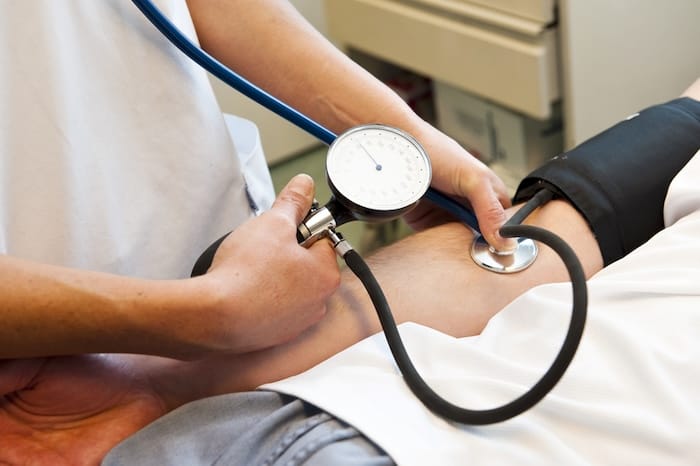- Calls to this hotline are currently being directed to Within Health, Fay or Eating Disorder Solutions
- Representatives are standing by 24/7 to help answer your questions
- All calls are confidential and HIPAA compliant
- There is no obligation or cost to call
- Eating Disorder Hope does not receive any commissions or fees dependent upon which provider you select
- Additional treatment providers are located on our directory or samhsa.gov
Eating Disorder Treatment
Eating disorders are serious mental health conditions that manifest as unhelpful and unhealthy attitudes and behaviors toward body weight, body image, food, and eating.
A combination of medical, nutritional, and psychological interventions is often needed to treat these conditions successfully.
Yet, there are many levels of care for eating disorder treatment, and the most effective program for you or your loved one depends on several factors.
Is it Time to Get Help?
How do you know when it is time to seek out professional support? In truth, there is no “wrong” time to get help for your eating disorder, and the longer you wait, the higher the risk that the disorder will worsen.
Consider some of the following signs or symptoms if you are concerned that you or a loved one may struggle with an eating disorder:
- Extreme weight loss and/or weight gain in a short period of time.
- Restriction of foods and/or food groups.
- Increased food “rules.”
- Hyperfixation on food contents and nutritional information.
- Exercising despite injury and/or inclement weather.
- Hiding foods.
- Possessing/using diuretics and/or laxatives.
- Using the restroom often between and/or after meals.
- Withdrawing from loved ones and social situations.
- Increased emotional dysregulation.
- Report of suicidal ideation.
- Feelings of low self-worth.
Contact your primary care doctor and/or mental health provider for help if any of these are present. This is particularly true if the above behaviors and symptoms impact your ability to participate fully in daily living activities such as proper hygiene and self-care, work and/or school routines, socializing, and maintaining interpersonal relationships.
Adverse health effects such as extreme weight loss or gain, decaying teeth, compromised immune system functioning, concerning lab results or vitals, dry skin, and/or thinning hair, to name a few, are also signs that an individual is malnourished and needs medical support for disordered eating behaviors.
Treating Specific Eating Disorders
Eating Disorder Treatment Options: Levels of Care
Just as the severity of eating disorder cases spans a spectrum, so too do the levels of care for treating eating disorders.
Some patients may need to start treatment at the highest level to slowly work toward recovery, while others may be able to manage their eating disorder behaviors and obtain a healthy body weight with less intensive programs.
Regardless, eating disorder treatment often follows a path, from most to least intensive care.
Intervention
Planning an intervention for a loved one struggling with an eating disorder is a methodical ritual that should be handled delicately. There are professionals educated specifically in the process of intervention planning. However, this may not be accessible to you or necessary. Even so, you should always have a mental health professional, such as a counselor or therapist, as a mediator for interventions.

The foundation of the intervention process is to approach the struggling individual with nonjudgmental, loving, and honest support. Each support person will be given the opportunity to express their perspective and the impact the individual’s behavior has had on them. As you plan for this, engage in your own therapy to express yourself authentically without becoming aggressive or vindictive.
The goal of an intervention is not to make the person feel ashamed but to help them see the impact and severity of their behaviors and support them in moving toward treatment and growth. Do not stage an intervention without also having options for the individual to choose from. Some of these should be treatment options, and others should be firm boundaries, should they decide not to get help. Regardless, remember to lead with love in your approach.
Inpatient Hospitalization
Inpatient hospitalization is the most intensive care for eating disorders. It involves admission to a hospital or specialized treatment facility and may involve medical stabilization. It is often only recommended for people:1
- Who are at risk of harming themselves
- With severe eating disorders accompanied by medical complications
- Who have not responded to outpatient treatment

The length of an inpatient stay can vary based on your medical condition and other factors. It may last a few weeks to a few months.1
Residential Treatment
Once a patient is considered medically stable, they can transition from inpatient to residential treatment. These programs typically last at least a month.2
This next-highest level of care involves living full-time at a treatment facility, where patients have 24/7 access to medical care and staff. Schedules are highly structured and typically include individual and group therapy, meal support, nutritional counseling, medical monitoring, and other forms of treatment.2
Partial Hospitalization Programs (PHP)
A partial hospitalization program (PHP) is the first intermediary step between inpatient and outpatient treatment. Care can take place in a treatment center, hospital, or virtually/remotely.3
While patients live and sleep at home while participating in a PHP, the level of treatment remains intensive, with programs typically running six to eight hours a day, for five or more days a week.3

During these sessions, patients generally continue the type of care they received in residential treatment, including:3
- Individual and group therapy
- Meal support
- Nutritional counseling
- Medical monitoring
This highly structured program is best suited for individuals ready to start incorporating more autonomy into their lives, but could still benefit from a high level of support and care.
Intensive Outpatient (IOP)
Intensive outpatient care (IOP) is another step down from a PHP, giving patients more freedom over their movement and choices, while offering them continued access to regular care. Care takes place in a physical location or virtually.3
At this stage, therapy sessions may take place up to three times a week for at least three hours each day.3 Intensive outpatient care may also include time for group therapy, meal support, and/or nutritional counseling. This treatment is ideal for patients who are proactively managing their eating disorder behaviors and are ready to begin taking on more social responsibilities, like returning to work or school, but who may still benefit from more intensive or regular check-ins than someone in regular outpatient treatment.3

Outpatient Care
Outpatient care is the least intensive level of care for eating disorders.
Outpatient treatment involves seeing a provider(s) (which can include a therapist, dietitian, healthcare provider, or psychiatrist) on a weekly or biweekly basis while living at home.3 Individual or group therapy sessions, nutritional counseling, and medication management are all available at this level.
Outpatient care is most effective for individuals with mild to moderate eating disorder symptoms. The individual should be medically stable, but may prefer ongoing support to help them practice or develop healthy coping strategies.

Support Groups
Support groups are incredibly beneficial for individuals who struggle with accessing treatment centers or financing treatment. Support groups can be in-person or provided virtually and are a more free-form and accessible approach to group therapy. Be advised that there are fewer limitations on what can be considered a “support group.”

Therefore, it is important to ask about the methodology and the education or experience of group leaders. Support groups have been found most beneficial when utilized as an additional component to mental health therapy provided by a licensed professional.
Determining the Appropriate Level of Care
Different levels of care are available for eating disorder treatment, with each providing various levels of support and intensity. Several factors may dictate an individual’s most appropriate or helpful level of care.4
If you or a loved one is struggling with an eating disorder, there are some considerations to keep in mind when determining the best level of care for your needs.
Severity of Symptoms
The severity of eating disorder symptoms spans a spectrum. Some patients can mostly manage their issues, while others need more help and access to care and support. This can affect the level of care that may be the most helpful for someone struggling with one of these conditions.
The Diagnostic and Statistical Manual of Mental Disorders (DSM-5) includes criteria to help determine the severity of an eating disorder.5
Professional Opinions
A healthcare provider will be able to determine the severity of an eating disorder, whether it be your primary care physician, therapist, or psychiatrist.
Healthcare professionals may also refer individuals to specialized eating disorder treatment programs or professionals based on their specific care needs and medical history.
Co-Occurring Disorders
Many individuals with eating disorders also struggle with co-occurring conditions, including both mental health disorders and physical illnesses. Depression, anxiety disorders, and substance use disorders, in particular, commonly co-occur with all types of eating disorders.6
When someone struggles with more than one psychiatric or physical condition, it’s important to address all related issues in treatment at the same time. The presence of co-occurring disorders could also change the type or level of care recommended for someone struggling with an eating disorder.
How to Find the “Right” Help
Once you’ve determined the appropriate level of care for you or your loved one, you can begin looking for treatment centers or programs that may offer the best help for your situation.
Still, even at this stage, it’s important to keep several factors in mind to ensure you find the best program possible.

Insurance Coverage
Eating disorder treatment is often expensive, and, depending on the required level of care, the process can also be lengthy.
Most people cannot afford this type of care out-of-pocket, so when considering which eating disorder program you’d like to enroll in, it’s essential to consider insurance coverage.
Before you even begin looking for specific eating disorder centers, check your insurance policy and speak with a representative from your insurance company to confirm the type of care they may cover.
Many treatment programs also employ staff dedicated to helping prospective patients work through insurance questions and difficulties. If you find a program you like, you should call to ensure they can work with your insurance plan.
Center Accreditation
A number of national and state laws are in place to help ensure staff members at eating disorder treatment programs are highly qualified (such as requiring licenses, certifications, or degrees to provide care).
Accreditation (while not required) indicates that the treatment program and its quality of care meet certain industry standards, and/or it has been approved by industry-leading organizations. The Joint Commission is one organization that develops standards and provides accreditation for eating disorder treatment programs.7 Others include the Commission on Accreditation of Rehabilitation Facilities (CARF) and the Residential Eating Disorders Consortium (REDC).
While eating disorder treatment is a highly personal experience, working with an accredited center typically increases the chances that you’ll have a successful experience or receive positive care.
Resources
- What Is Inpatient Eating Disorder Treatment? 5 Things to Know. (2023). National Alliance for Eating Disorders.
- Peckmezian T, & Paxton SJ. (2020). A systematic review of outcomes following residential treatment for eating disorders. European Eating Disorders Review; 28(3):246–259.
- National Alliance for Eating Disorders. (n.d.). Types of Eating Disorder Treatment.
- Level of Care Guidelines for Patients With Eating Disorders. (n.d.). Massachusetts General Hospital. Accessed March 2023.
- Inside Out Institute for Eating Disorders. (n.d.). DSM-5 Diagnostic criteria for Eating Disorders.
- Eating Disorders. (2024). National Institute of Mental Health.
- Eating Disorders Standards for Behavioral Health Care. (n.d.). The Joint Commission. Accessed March 2023.

